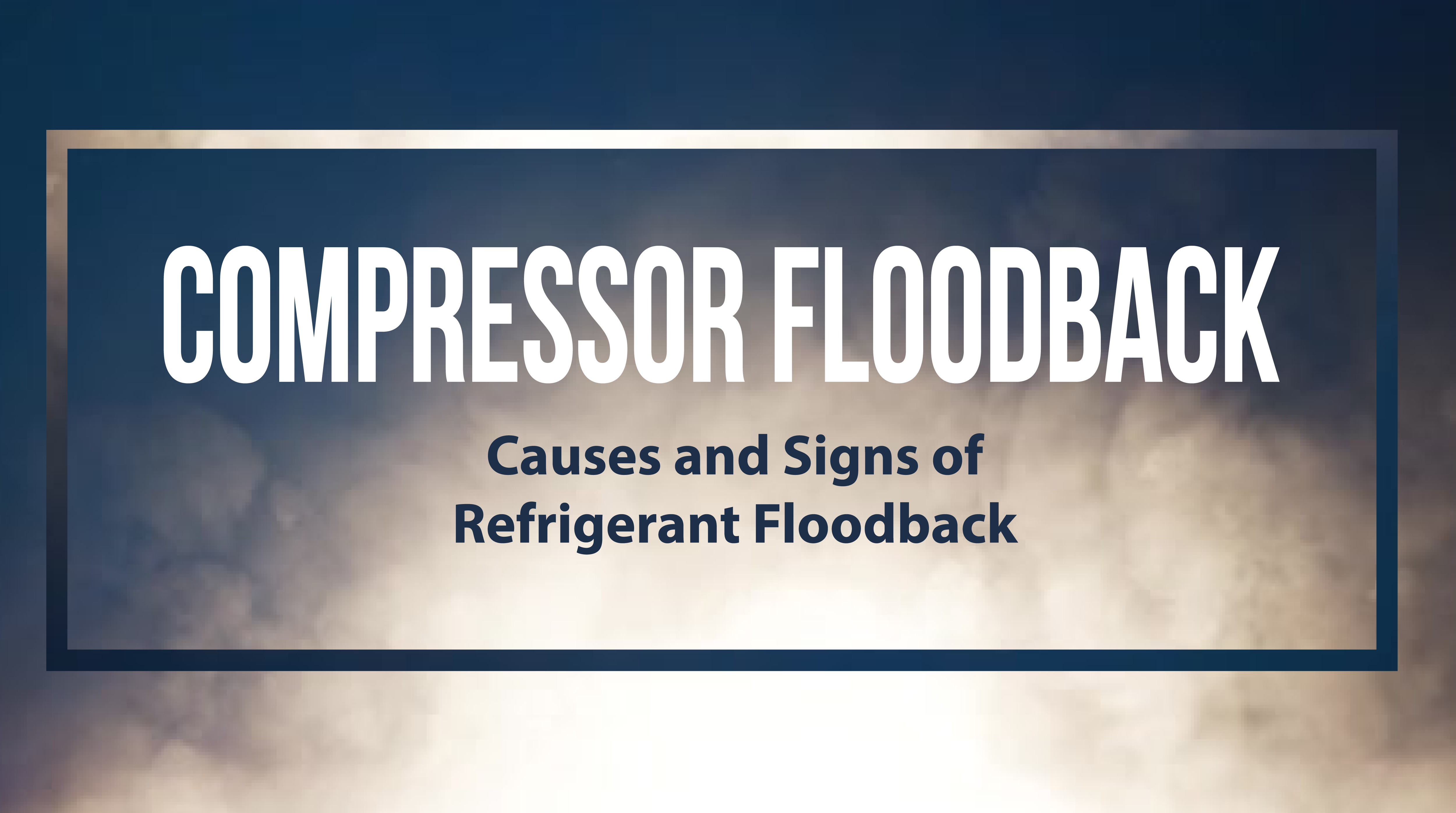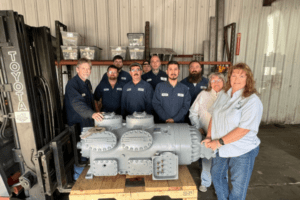
Compressor floodback is a common cause of HVAC/R system failure. Floodback occurs when uncontrolled liquid refrigerant enters the compressor during system operation. In an HVAC/R system, the refrigerant exits the evaporator and enters the compressor in a vapor state. But when the refrigerant is not vaporized entirely in the evaporator, a part of it gets sucked into the compressor in its liquid form. Compressor floodback may be misdiagnosed as compressor failure, even though the compressor doesn’t cause this phenomenon.
Causes of Compressor Floodback
Many different factors may lead to refrigerant floodback in an HVAC/R compressor. Most of them could be traced to:
- Problems with the evaporator – Ice buildup on the evaporator coil due to poor ventilation, a damaged evaporator fan belt, and a failed fan motor are some common problems that could result in refrigerant floodback. Incorrect defrost cycles or a less effective method of defrosting could also cause ice to accumulate on the evaporator coil, eventually leading to compressor floodback.
- Overcharged conditions and/or incorrectly sized capillary tubes – An overcharge of refrigerant or a capillary tube that’s too large and/or too short indirectly means that a larger amount of refrigerant could enter the evaporator. In this case, the boiling point of the refrigerant may never be reached, which could lead to refrigerant floodback. However, floodback can be prevented in systems equipped with expansion valves that are working correctly.
- Defective or misadjusted expansion valves – Because expansion valves regulate the rate at which the refrigerant flows into the evaporator, a malfunctioning or a misadjusted valve could result in refrigerant floodback.
- Refrigerant migration – During the off cycle, a difference in pressure may occur between the refrigerant liquid/vapor within the system and the oil in the crankcase. Because liquids and vapors flow from high- to low-pressure areas, the refrigerant will migrate to the crankcase, which is the lowest pressure point in a refrigeration system. When the compressor starts, the refrigerant settled in the bottom of the crankcase, under the oil (refrigerant is heavier than oil), will start to boil and vaporize, entering small particles of oil and eventually causing compressor failure. Refrigerant migration to the crankcase may also result in liquid slugging during start-up. Although refrigerant migration and floodback can be prevented by adding a suction accumulator to the system, accumulators may also flood in a severe flooding condition.
Signs of Compressor Floodback
Oftentimes, the amount of liquid refrigerant returning to the compressor determines the type and extent of damage that will occur. Here are a few signs that could indicate refrigerant floodback.
Loss of Lubrication
Once liquid refrigerant gets into the crankcase, it’s only a matter of time before the compressor seizes. Because a part of the oil used to lubricate different mechanical components is entrained by the refrigerant and pumped by the compressor into the system, the level of oil in the crankcase will decrease, robbing important compressor parts of vital lubrication. As a result, certain parts may wear, overheat, seize, or break. As well, if liquid refrigerant is drawn into cylinder bores, it will wash lubricating oil off cylinders and pistons. This will lead to scoring and overheating in the cylinder.
Lower Efficiency
The oil particles entrained by the refrigerator will increase the density of the refrigerant charge. As the refrigerant gets pumped through the cylinder, higher than recommended crankcase pressures will develop. That extra load will cause the compressor motor to draw more current, which will result in unwanted inefficiencies. Additionally, a motor that draws more current could lead to compressor burnout. Oil that gets inside a refrigeration system will also coat the inner surfaces of valves and tubes, further decreasing system efficiency. Clogged capillary tubes, faulty valve assemblies, broken valves, compressor overheating, and repeated breaker tripping may also occur from this phenomenon.
Oil Foaming
When the compressor starts, the pressure of the refrigerant-oil mixture in the crankcase drops suddenly. As a lower amount of liquid refrigerant is required to saturate the oil, the rest of the refrigerant will expand and evaporate into vapor. The sudden expansion of the refrigerant will cause the oil-refrigerant mixture to boil rapidly, generating the excess foaming often associated with compressor floodback. Because oil can also cause some foaming at start-up, only constant foaming should be considered an indicator of refrigerant floodback. A frosted, cold, or sweaty crankcase is another telltale sign of floodback.
A point worth mentioning is that compressor floodback often occurs during low load conditions. In case of a malfunctioning HVAC/R compressor, monitoring the system over a 24-hour period could pinpoint the problems that only occur when the facility is unattended.












